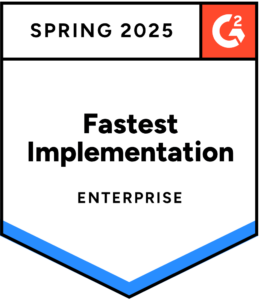Let your AI Co-Worker Take the Risk Out of High-Volume Reconciliations
Blog post
Share
The adage ‘the devil is in the details’ holds particularly true when it comes to your financial close and the risk associated with your transactional data. Embracing AI-driven solutions as your co-worker to aid transactions matching not only saves resources but provides an additional layer of comfort when managing risk without the additional effort.
The Challenge: Transaction Matching Process
With supply chain pressures resulting in more intercompany relationships, new business channels with third-party agents creating more data trails, and more complex consumer behaviors and purchase interfaces, many organizations are struggling to manage large volumes of transaction data, keep up with changing payment trends, and provide business-critical insights as the economy shifts.
Leading organizations are leveraging transaction matching automation to do the heavy lifting, ensuring their time and effort are focused on high-value activities. While automating the matching process may reduce manual efforts and improve efficiency, some solutions may have limited ability to detect and correct errors or anomalies due to lack of oversight. Cadency Match facilitates an extra detective step using AI to identify risk at the transactional level to indicate where human intervention may be necessary.
The Opportunity: Artificial Intelligence (AI) for Transaction Matching
According to the Hackett Group’s 2025 Enterprise Gen AI Outlook report, 89% of enterprise companies are moving forward with AI initiatives in 2025. Importantly, they are seeking to alleviate the burden faced by their accounting teams, using various operating models to assist workers with mundane tasks and offload repetitive work, freeing up human employees to support priority business objectives.
Due to the massive opportunity that AI presents, it is no surprise that the corporate accounting industry is facing a demand for its application in the financial close process. While providers like Trintech have continually promoted automation as a solution to market problems for many years, finance leaders are beginning to understand how AI and automation technologies can properly address the challenges they face.
Reconciling transactions is usually the first step in the financial close process and is one of the most time-consuming and manual parts of it. With Cadency Match, you can quickly perform transaction matching and rapidly enhance the accuracy and regulatory compliance of all resulting financial statements. Matching transactions with bank statements, credit card statements, point of sale, merchant, third-party delivery services, and other external sources happen at a fraction of the time that manual processes take. This frees up time to spend on unmatched transaction exceptions – improving the accuracy and reliability of your close.
Cadency Match can do the heavy lifting of data collection, transformation, manual matching, and resolution process. On top of that, it can automate the identification of risk through AI ensuring quality, control, and ongoing improvement to help increase match rate.
Solution: AI-Driven Risk Identification with Cadency Match
At the heart of Cadency Match is a Transaction Risk Rating engine that employs machine learning (ML) to apply risk ratings to transaction matches, ensuring more and more accurate review of suspect or out-of-policy items. The Risk Rating Engine is built to analyze copious amounts of financial data and allocate risk ratings, based on historical data specific to each customer. This not only facilitates a thorough review of transactions but also aids in identifying potential fraud and policy deviations, with risk ratings from 0-10 and categorized into Low, Medium, or High.
The Risk Rating Engine conducts comprehensive analyses, including monetary value assessments, and trend analyses to detect anomalies and aid in identifying potential fraud. Entries rounded off or altered to be rounded off are flagged for review, suggesting potential risk. It also evaluates the matching methods, where deviations from standard procedures could indicate process weaknesses or fraudulent activities.
Conclusion
Cadency Match automation with AI’s role in risk identification is a practical example of AI can be applied. It not only simplifies the accountant’s workload by managing repetitive tasks but also empowers them to concentrate on strategic, value-adding activities. This technological adoption, though seemingly incremental, progressively refines and automates matching processes, significantly mitigating risk and positioning finance and accounting teams as pivotal, strategic partners in driving organizational change.
By Kierian Davis, Product Marketing Manager







